Response Vessel Damaged the Hull of Burning Freighter off Sweden
Hull cracking could have resulted in water ingress if contact had continued, according to accident investigators
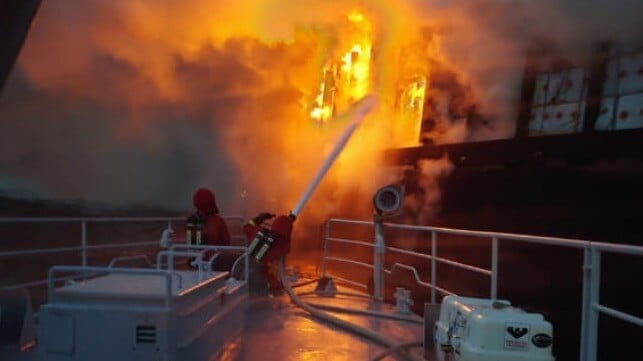
During the response to a serious fire aboard the lumber carrier Almirante Storni in 2021, a Swedish Coast Guard vessel intentionally pressed its stern into the bulker's hull, bending in plating and nearly causing flooding, according to the Swedish Accident Investigation Authority (SHK).
On December 4, 2021, a fire broke out in a deck cargo of lumber aboard the wood carrier Almirante Storni at an anchorage outside of the port of Gothenburg, Sweden. The Storni was taking on fuel oil at the time, and the bunkering vessel's crew saw flames towards the Storni's bow and raised the alarm.
The Storni's crew, local first responders, the Swedish Coast Guard and professional salvors worked together to contain the blaze until the ship could be brought alongside the pier in Gothenburg.
In the course of the firefighting response at the outer anchorage, rough weather made work difficult for the Coast Guard multipurpose response vessels KBV 001 and KBV 002. The 5,400-tonne, 9,000-horsepower vessels are the service's largest and most capable salvage ships, and they were on scene to provide fire monitor coverage. To keep the streams of water on target in heavy swell, at least one of these vessels backed down and pressed its fendered stern against the freighter's side, according to SHK. There were issues with the fendering: the ship's fixed fenders became damaged, replacement inflatable fenders tore, and the crew finally switched to tractor tires.
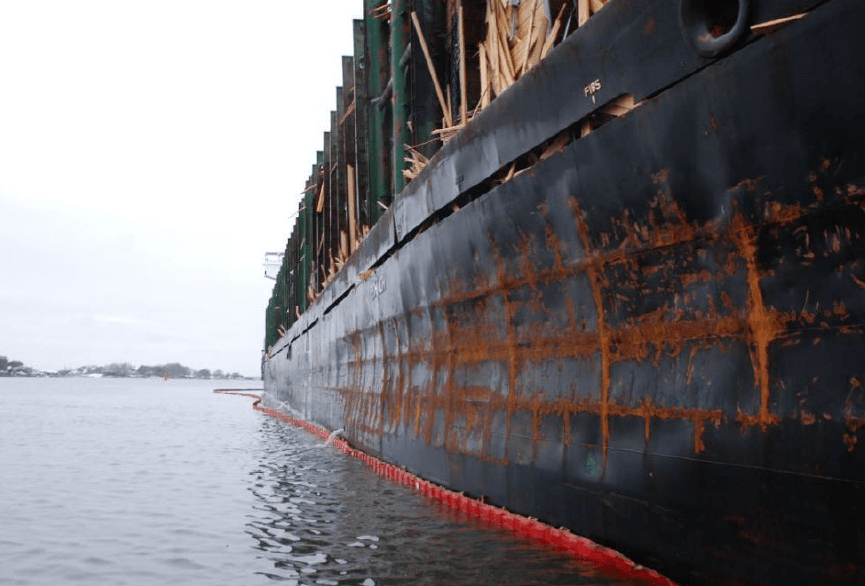
Extensive hull deformation on Almirante Storni's starboard side towards the bow (Courtesy SHK)
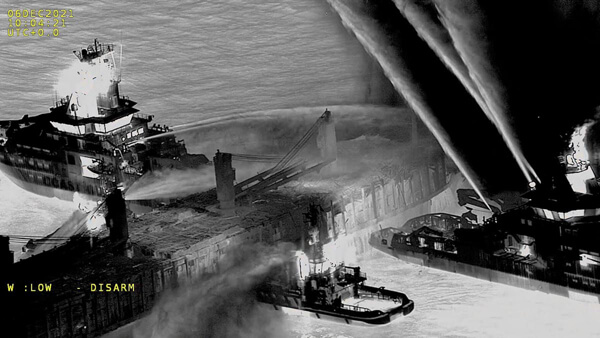
KBV 001 and KBV 002, both stern-first to Almirante Storni's bow, December 6, 2021 (Swedish Coast Guard)
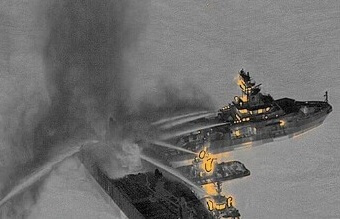
Aerial infrared image of KBV 001 or 002, center right, oriented stern-first towards Storni's starboard bow (Swedish Coast Guard, December 8, 2021)

View astern from aboard the same coast guard response vessel, looking towards Almirante Storni's starboard bow (Swedish Coast Guard, December 8, 2021)

AIS data showing KBV 001 oriented stern-first towards Almirante Storni's bow, December 8, 2021 (MarineTraffic)
The technique was ultimately successful: the response vessels' fire monitors kept the blaze contained, and Almirante Storni stayed afloat.
However, the pressure also caused damage. On the Storni's starboard side, the hull was pushed in between frames 160 and 190 below the main deck level. This created two longitudinal cracks in the hull of about three feet long each. A smaller indentation was also found on the port side between frames 185–187.
"The dents and cracks that appeared on the [Storni's] starboard side could have had serious consequences. If the seas had not decreased and there had been a continued need to push against the hull, it cannot be ruled out that the damage could have led to water ingress," warned SHK. "Both the method itself and the use of fenders or other arresters should be evaluated."
Both KBV 001 and KBV 002 sustained minor hull damage on their sterns.
Extension cord likely caused fire
Storni had arrived in Gothenburg in late November to take on 45,000 cubic meters of sawn lumber. During loading, a repair crew was working on machinery on the dock, and they had to shut off power on the pier. In order to keep the lamps lit on the dock during night loading operations, the crew of the Storni plugged in an extension cord at the base of the ship's forward crane, then ran it over the rail and down onto the pier. On December 1, when it came time to depart, the crew did not retrieve the extension cord, and the cord parted as they pulled away from the pier. The frayed end remained dangling in the air, and it was visible throughout the events that followed.
Three days later, as Storni was taking on bunkers off Gothenburg, the crew of the bunker vessel spotted the beginnings of a fire towards Storni's bow. The bunker vessel called in the emergency and maneuvered to bring its fire monitor to bear on the fire. Some time later, the fire alarm in Storni's Hold 1 went off, indicating that the blaze had spread belowdecks.
The Swedish Coast Guard vessels KBV 310, KBV 001 and KBV 002 were mobilized to assist, along with local tugs and response boats. A team of specialist firefighters boarded the Storni, but the access route to the hold was not safe to use, and it was decided not to attack the fire directly while at sea.
Instead, the response team worked with the port of Gothenburg to make arrangements to return to the pier and offload the burned wood. The preparations took several days, but when all was ready, she came alongside and the damaged cargo in her forward hold was unloaded with a crane and grapple. The seat of the fire was uncovered and finally extinguished on December 14.
After the fire, investigators found the remains of the damaged extension cord, still plugged into a bulkhead socket at the base of the forward crane. The jacket was fire-damaged, and the cut-off end was still dangling over the side - but the circuit breaker had never tripped. The investigators surmised that a short in the wire had caught the cargo aflame on deck, and the blaze then spread down into the hold.
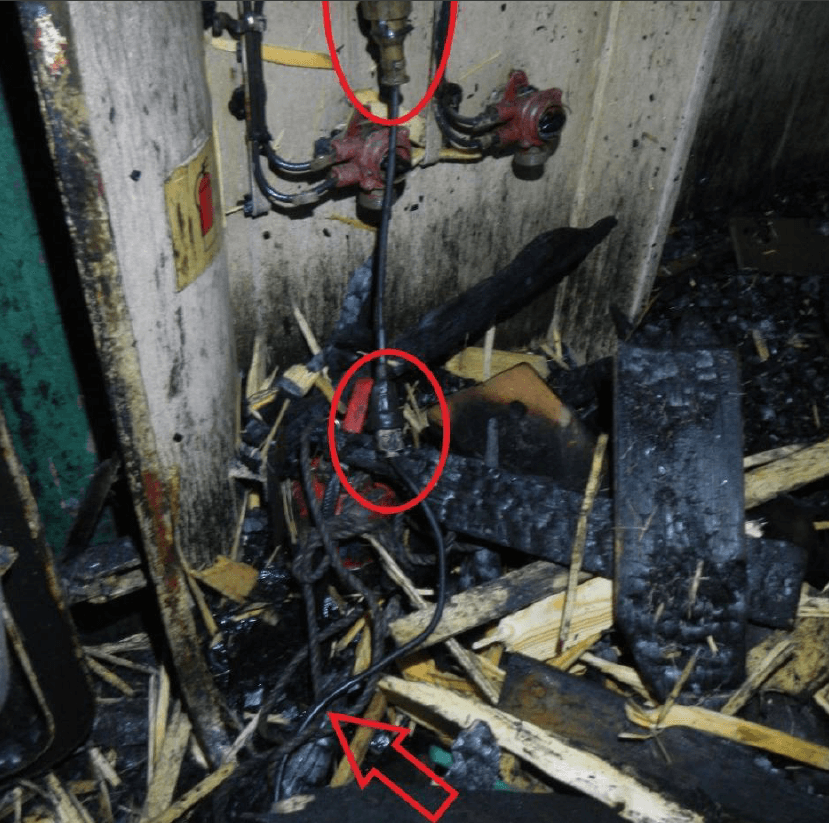
The cord and plug-in after the fire (Courtesy SHK)
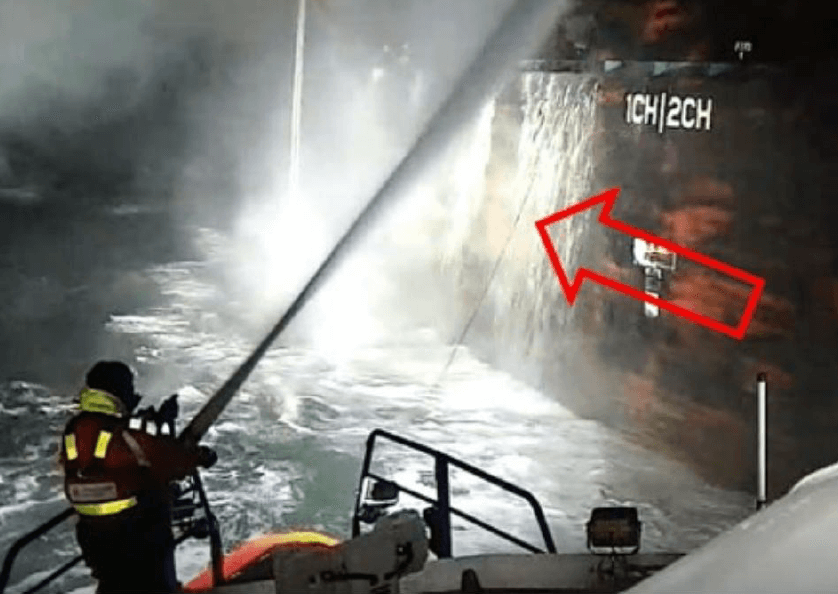
The severed overboard end of the extension cord during the firefighting response (SHK)
